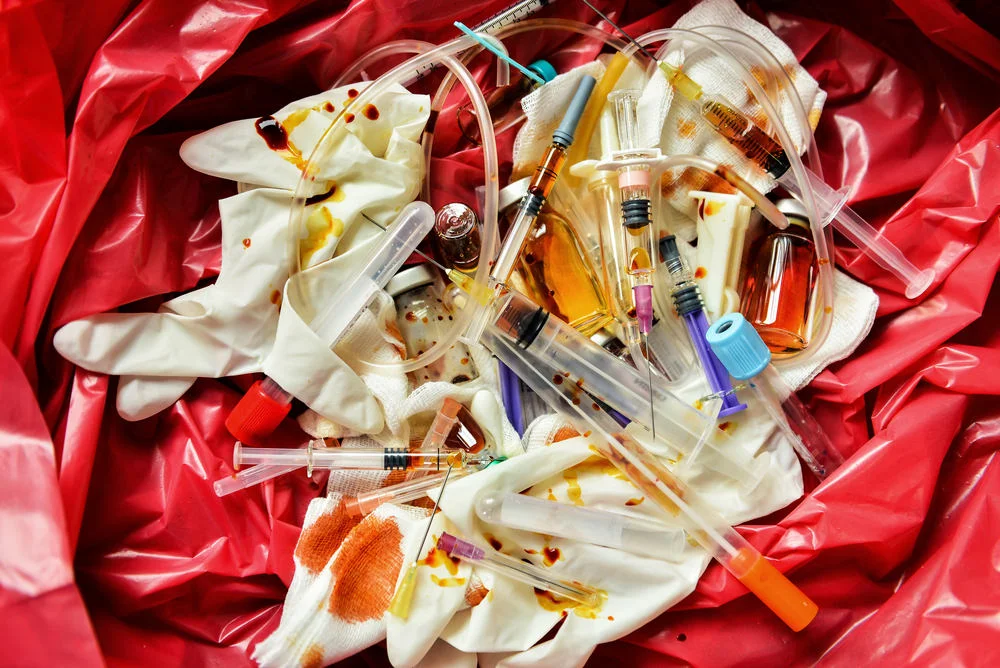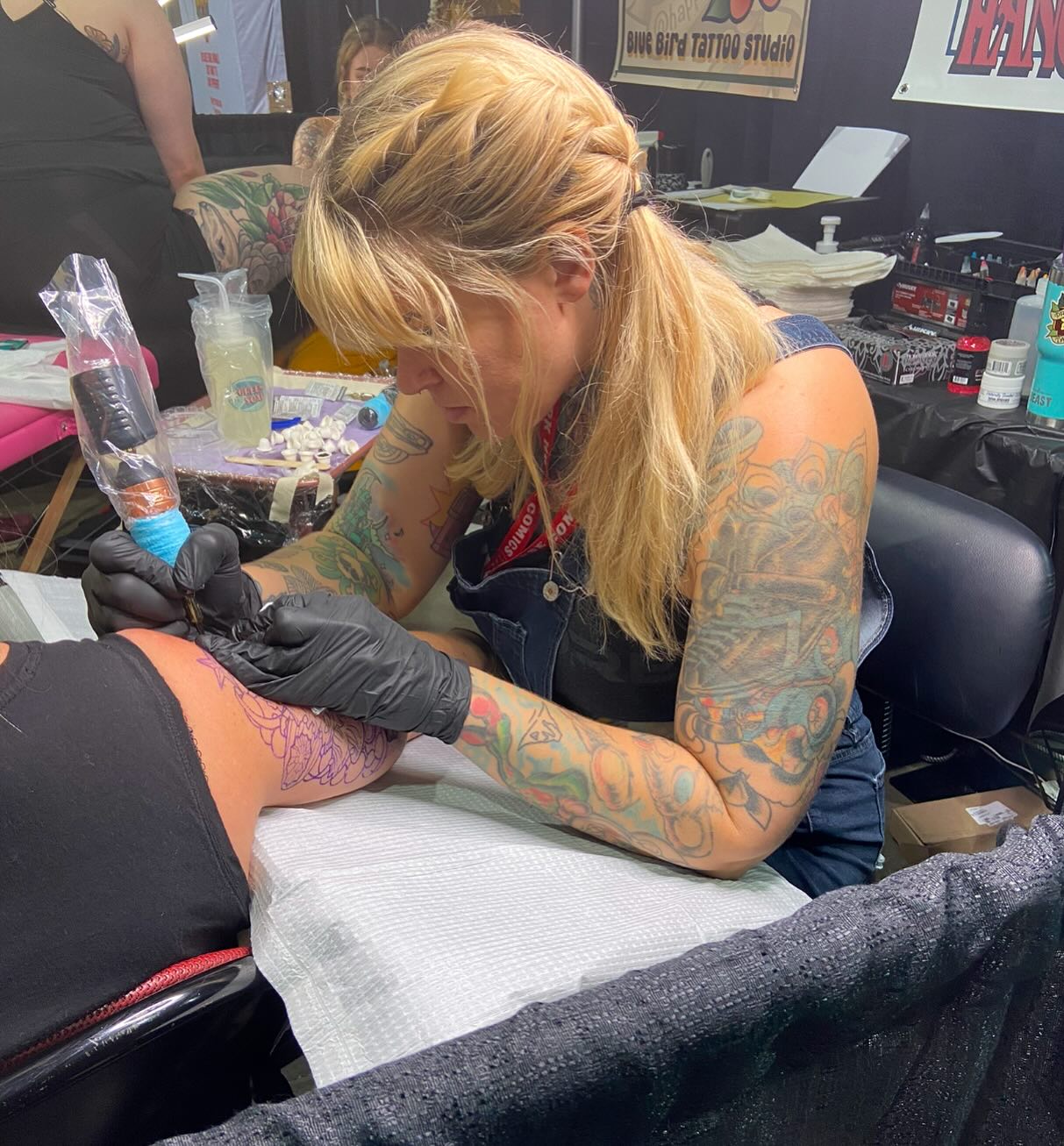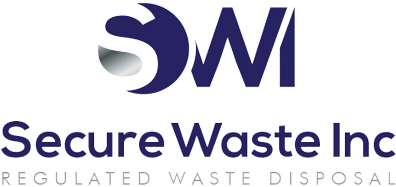Medical Waste Bags: Everything You Need To Know From Secure Waste Expert Medical Waste Management
Medical waste bags, what are they and what are they used for? Secure Waste offers valuable insights into this critical aspect of the regulated medical waste management process. These specialized bags are designed to safely contain and transport hazardous materials generated by healthcare providers, such as doctors, dentists, and hospitals.
Medical waste can include used syringes, scalpel blades, soiled bandages, and other materials that may pose a risk of infection or environmental harm. Medical waste bags are typically color-coded, with red or yellow bags indicating that the contents are biohazardous. They are made from durable, puncture-resistant materials, ensuring they can withstand the rigors of handling and transport.
Proper use of medical waste bags is paramount for maintaining safety and compliance with health regulations. Healthcare providers must be trained on the appropriate disposal methods to reduce contamination risk and protect workers and patients. Let’s explore the rules, best practices, and importance of effective medical waste management practices.
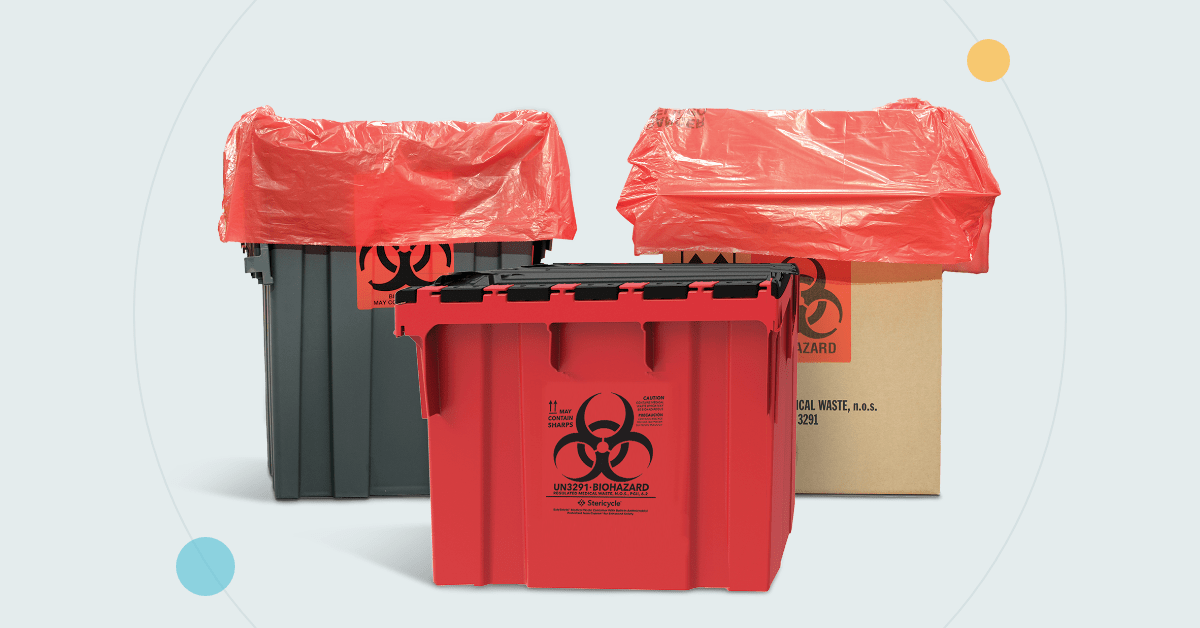
Before discussing the medical waste bag, let’s examine what is placed inside it and how to utilize it properly.
What Waste Goes in Medical Waste Bags?
Medical waste is commonly known as red bag waste in the healthcare industry. Ensuring that only non-sharps medical waste is disposed of in red bags is crucial. The cost of disposing of regulated medical waste is significantly higher than regular waste, making it financially imprudent to place anything other than medical waste in these bags.
To effectively reduce the volume of regulated medical waste your facility produces, it is essential to ensure that garbage is placed in the appropriate containers. Regulated wastes are subject to strict disposal and treatment guidelines due to their potential risks to human health and the environment, making proper handling and segregation vital.
What is Medical Waste?
Medical waste refers to materials considered biohazardous due to contamination with blood or other potentially infectious materials (OPIMs). This type of waste can exist in both liquid and solid forms and requires careful handling and disposal to prevent the spread of infection and ensure public safety.
What goes in medical waste bags?
- Personal Protective Equipment (PPE): Items such as gloves, gowns, gauze, bandages, and dressings that have come into direct contact with blood or any other potentially infectious materials and necessitate careful handling to prevent contamination.
- Blood and Blood Products: This category includes various forms such as blood tubes, released blood, and emptied vials, which must be managed with strict biohazard protocols to ensure safety.
- Visibly Contaminated Body Fluids: This encompasses fluids tainted with blood, including, but not limited to, urine, vomit, feces, vaginal secretions, pericardial fluid, cerebrospinal fluid, amniotic fluid, peritoneal fluid, and synovial fluid. Each requires specific disposal procedures to mitigate health risks.
- Sealed Sharps Containers: These contain dangerous items like needles, scalpel blades, syringes, and other used sharp instruments, all of which must be securely stored to prevent injuries and infections.
- Pathological Specimens and Microbiological Wastes: This includes unfixed human tissues, organs, and animal parts, which should be segregated from other biohazard waste and clearly labeled to ensure proper handling and disposal procedures are followed.
Sharps Medical Waste
Sharps waste is a category of medical waste that requires special handling due to its potential hazards. It is essential to understand that sharps, such as needles and syringes, should never be placed directly into medical waste bags. This precaution is critical because these sharp objects can easily pierce through standard red bags, creating a significant risk for waste handlers who may encounter exposed needles or syringes.
Needlestick injuries pose a serious threat as they are a primary transmission route for bloodborne pathogens. All sharps must be disposed of in approved, sealed, and puncture-proof containers to mitigate this risk. Only after the sharps containers have been adequately secured in these containers should they be placed inside red bags and biohazard bins. This layered approach to disposal protects waste handlers and upholds the safety standards necessary for managing medical waste effectively.
Guidelines for Medical Waste Management
- Secure Biohazard Disposal: Always use designated red bags to dispose of biohazardous materials, ensuring that the waste is appropriately contained and complies with safety regulations.
- Safe Sharps Management: Place all sharp instruments and materials in durable, puncture-resistant containers explicitly designed for sharps. Ensure these containers are securely sealed to prevent any risk of injury.
- Proper Lining for Biohazard Bins: Line your biohazard waste bins with red bags that meet Department of Transportation (DOT) standards, ensuring safety and compliance.
- Clear Labeling and Weight Limits: Clearly label your biohazard bins to indicate their contents and ensure that the waste within does not exceed 50 pounds, maintaining a standard for safe handling.
- Personal Protective Equipment (PPE): When handling biohazardous waste, wear appropriate personal protective equipment, such as gloves, masks, and gowns, to safeguard against potential exposure.
- Waste Stream Segregation: Implement a systematic approach to effectively segregate various waste streams, reducing the risk of contamination and ensuring proper disposal methods for each type of waste.
- Comprehensive Training for Staff: Provide thorough training for all clinical staff members on the protocols for handling biohazardous materials, reinforcing the importance of safety and compliance.
- Regular Medical Waste Disposal Services: Partner with a licensed medical waste disposal company to service your facilities at a frequency that adheres to compliance regulations, ensuring the safe and proper disposal of medical waste.
Effective medical waste management is crucial for ensuring a safe and compliant environment. It’s vital to recognize that regular and regulated medical waste are distinct and should always remain separate to avoid potential environmental hazards. To ensure safety, regulated medical waste must be treated using sterilization methods such as microwave processing, autoclaving, or incineration before disposal. Misclassifying waste in medical settings can increase costs, fines, and safety concerns. Therefore, it’s essential for clinic staff to understand the various types of medical waste they generate and follow the proper disposal protocols, fostering a safer workplace and maintaining regulatory compliance. Your diligence makes a difference!
Now that you know what medical waste is and how to manage it properly, let’s discuss medical waste bags.
Managing medical waste is crucial for ensuring safety and compliance with regulations in the healthcare industry. Specialized medical waste bags effectively collect and dispose of various types of medical waste. These bags are typically red and prominently display a biohazard symbol, indicating the potential risk associated with the contents.
Each bag is labeled with clear text that typically states “Medical Waste” or “Biohazard Waste” in English and, in some cases, may include Spanish translations such as “Desechos Médicos” or “Residuos Biológicos.” This labeling helps identify the waste as hazardous, ensuring it is handled appropriately throughout the disposal process.
Additionally, these bags may be designed to handle specific types of waste, such as infectious materials, sharps, or anatomical waste. They are constructed from durable materials to prevent leaks and tears, ensuring safety during transport and disposal. Adhering to proper protocols for medical waste management not only protects healthcare workers and patients but also helps to safeguard the environment from contamination.
Standard Red Medical Waste Bag
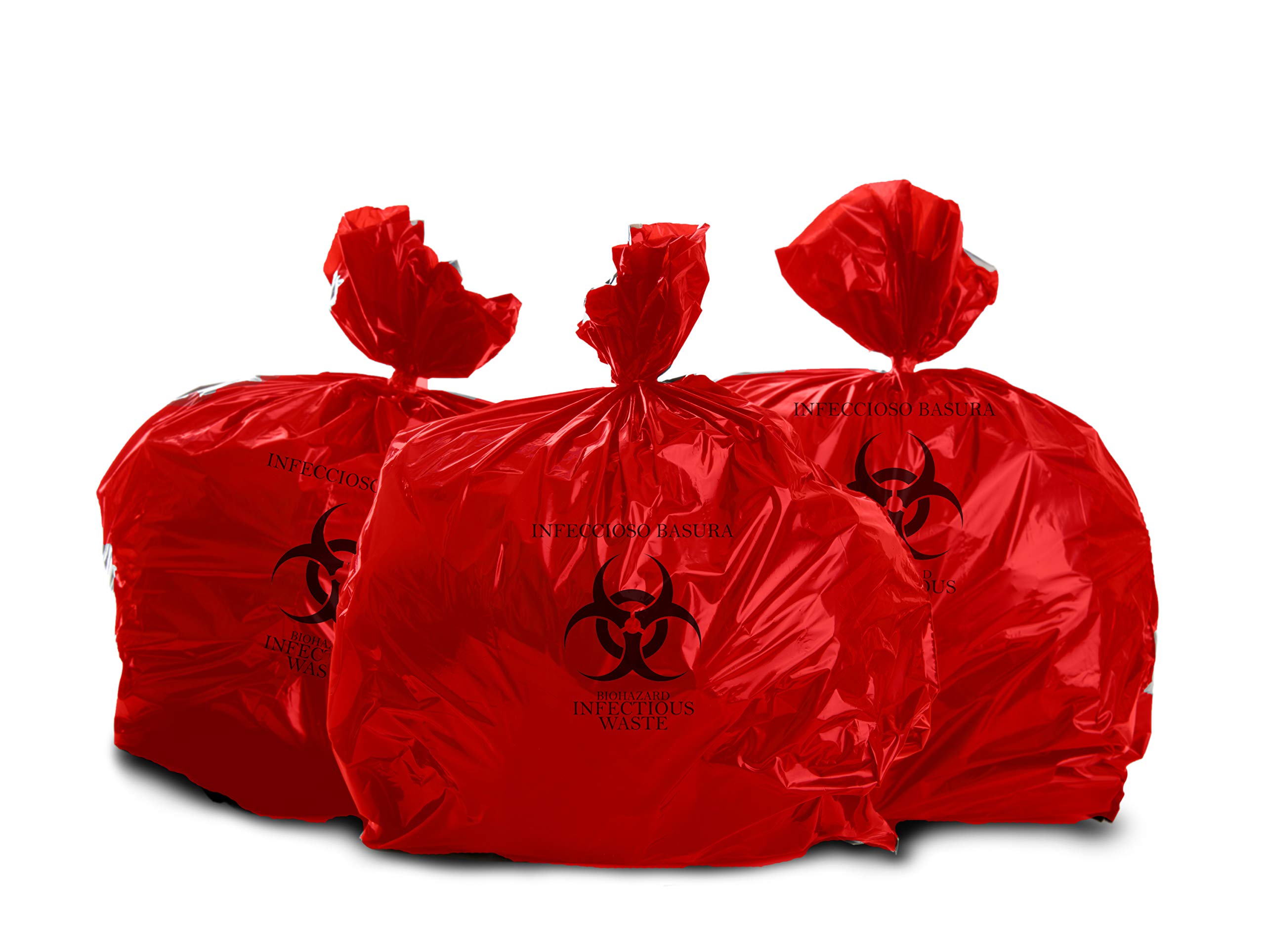
Yellow Chemotherapy Medical Waste Bags
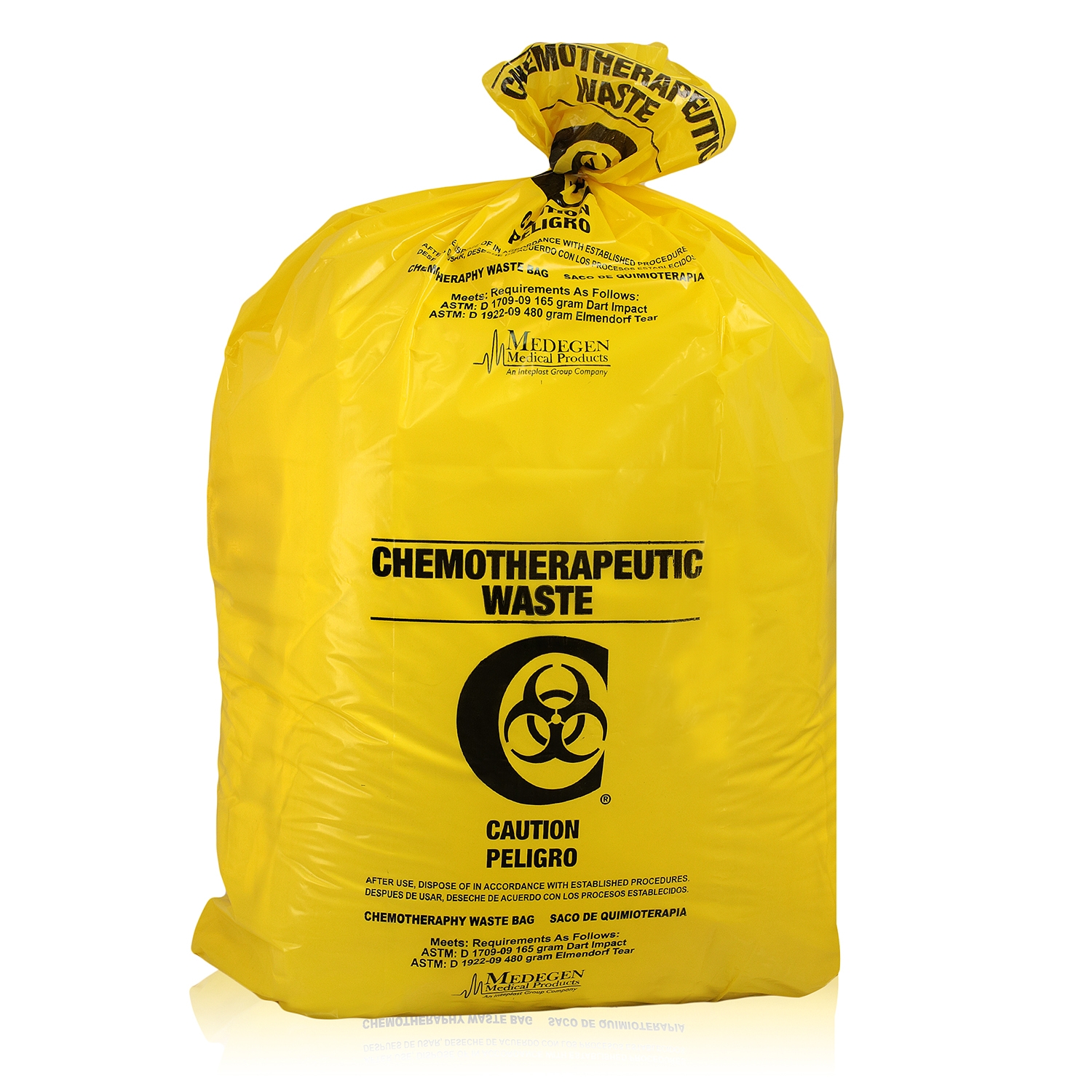
In Conclusion:
Now that you have a more comprehensive understanding of medical waste bags and disposal, don’t hesitate to contact Secure Waste.
We provide reliable, compliant, eco-friendly medical waste disposal solutions for your facility’s needs. We have expertise in biomedical, hazardous waste, and Sharps container disposal. In addition, we provide customized waste management plans, including secure collection and transport, and sustainable disposal practices.
Contact us today for a FREE Waste Assessment, or request a quote online!
**Disclaimer** This information is provided for reference purposes only and should not be considered as legal advice or factual information at the time of your reading. Regulations frequently change and can vary from state to state. We encourage you to contact your local regulatory authorities or Secure Waste directly for the most current information. Please note that Secure Waste is not liable, in part or in whole, for any information contained on this page or website.
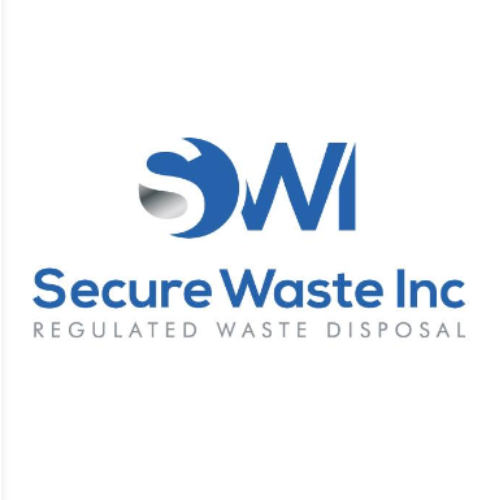
Expert Medical Waste Management: With over 25 years of industry experience, Secure Waste is a trusted local leader in hazardous and biohazardous waste disposal across Maryland, Virginia, and Washington, D.C. Specializing in medical waste management, sharps needle disposal, and biohazard waste removal, the company ensures full compliance with federal, state, and local regulations while prioritizing environmental sustainability.
The company also offers additional services, including secure document shredding and sharps container sales, providing comprehensive solutions for healthcare facilities and businesses. Our cost-effective services help clients maintain regulatory compliance without unexpected costs.
With a commitment to customer satisfaction, Secure Waste offers tailored waste management plans that align with industry best practices. Their team of experts provides reliable, timely, and compliant services, making them the preferred choice for medical waste disposal. For a free waste quote or more information, visit www.securewaste.net
